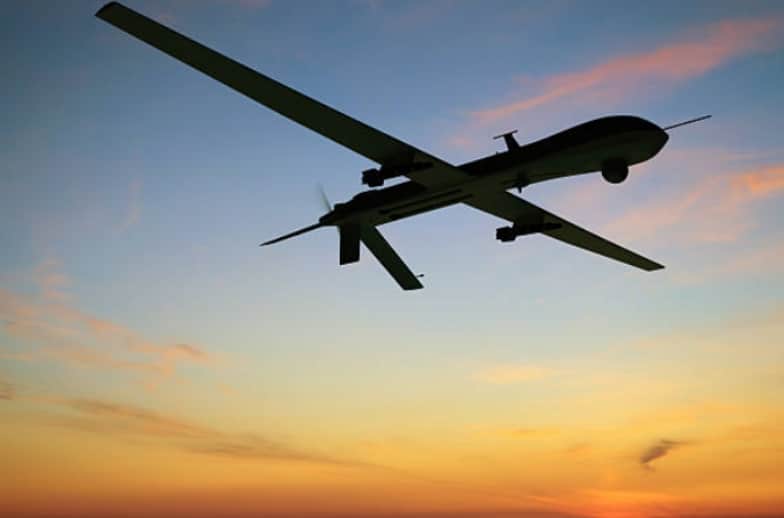RF systems must be extremely reliable in demanding environments from the ground and sea to space
High-Performance Coaxial Cables and Connectors for Harsh Environments
RF Interconnect Solutions for Extreme Environments
Radio frequency (RF) systems support vital functions in critical applications, including military electronics applications such as intelligence, surveillance, and reconnaissance (ISR) and electronic warfare (EW) systems, utilities infrastructure, hypersonic missiles, particle accelerators, satellites, spacecraft, aerospace, and much more. These systems must be extremely reliable and continually offer high performance—in very demanding and variable environments on the ground, in the air, in space and at sea. RF systems for vital functions in critical applications must be extremely reliable in demanding environments from the ground and sea to space.For example, applications such as hypersonic missile guidance will reach temperatures ranging from 200-250°C, or even as high as 600-1,000°C. Other applications such as particle accelerators and nuclear power plants operate in high-radiation environments. Some military electronics applications systems are exposed to corrosive salt spray in the ocean or high temperatures in the desert. Utility infrastructures are often exposed to varying weather conditions, natural disasters, etc. Any application exposed to flight and landings will be subject to extremely high vibration and shock environments.
An RF interconnect system that can withstand all the rigors of these tough environments is required. And while safety comes first, performance must also be flawless, as well as the ability to operate interference-free at all times.
Typical challenges in determining the optimal coaxial cables and connectors for extreme environments include evaluating factors such as signal-to-noise ratio, low loss, shielding, reliability, flexibility, superior amplitude stability, high density, low smoke, or non-outgassing materials, and more.
Phase Stability
RF signals must travel through coaxial cables at consistent speeds regardless of environmental factors. Therefore, phase stability is key when selecting the right coaxial cables and connector solutions for extreme environments

Phase is a crucial parameter for detection and measurement in many RF systems such as phased array radar, anti-missile defense, electronic warfare, and other systems that rely on continuous transmission and reception of RF signals with high accuracy and consistent speeds. As temperatures change to cold or warm extremes, cables do not exactly track together; the phase match degrades just slightly. That small amount of degradation, known as its phase tracking characteristic, can adversely affect system performance. Therefore, cable assemblies optimized for phase performance are also required to minimize phase change over temperature.
For example, the electronically steered antennae used in many RF applications employ an array of radiating elements to steer antenna beams rather than physically moving an antenna. Beam steering for transmission or reception is performed by adjusting the phase of the individual antenna elements in the array. The antenna array elements are each fed by high-frequency transmission lines. The accuracy of the signal phase presented to each array element depends on the phase accuracy and stability of the cable assemblies. Therefore, cable assemblies that are optimized for phase performance usually exhibit minimal changes in phase with temperature.
Environmental Seals
Connectors are another important factor when designing RF interconnect solutions for extreme environments. The connection between an antenna and a cable can be a point of entrance for water, fuel, debris, and other contaminants. The best connectors are designed to reduce loss and withstand critical environments.
A Legacy of Innovation: The History of Times Microwave Systems’ Multiport Connector Systems
Related Resources
Do You Have Questions?
Not sure what you're looking for? Unable to find what you need? Get in touch with our team of experts who can help guide you towards a solution
Miltech®
Our MILTECH® family of hermetically sealed flexible RF and microwave transmission line assemblies is listed in the Qualified Products Database (QPD) by the Defense Logistics Agency (DLA) and optimized for commercial, military, and other demanding applications. MILTECH features a proprietary application of a spiral flat strip braid that results in a cable assembly with superior phase stability without sacrificing flexibility
SiO2
The SiO2 semi-rigid cable assemblies are used in applications demanding the ultimate in phase tracking performance and extreme environments.
IB-141
InstaBend® 141 are flexible, coaxial microwave assemblies designed for interconnects between RF circuit cards, modules and enclosure panels. The cable can be bent very closely behind the connector, simplifying cable routing.
Subscribe to our newsletter!
Interested in receiving email newsletters and other updates from Times? Subscribe now!
Deprecated: Function WP_Dependencies->add_data() was called with an argument that is deprecated since version 6.9.0! IE conditional comments are ignored by all supported browsers. in /home/dh_myfd7p/tmtestsite.com/wp-includes/functions.php on line 6131
